Where are you, Gulf Fritillaries?
The Gulf Fritillary (Agraulis vanillae) population seems to be diminishing this year around Solano and Yolo counties.
A few here, a few there, but not in the large numbers of last year.
Last summer the Gulf Frits overwhelmed our passionflower vine (Passiflora), their host plant, and skeletonized it.
Which is what we want them to do. We plant Passiflora for them, not for the fruit or the blossoms. On a good year, they eat it all--blossoms, fruit, leaves and stems--and look for more.
The history of the butterfly in California is as striking as its silver-spangled, reddish-orange coloring.
“It first appeared in California in the vicinity of San Diego in the 1870s,” says noted butterfly expert Art Shapiro, distinguished professor of evolution and ecology at the University of California, Davis. “It spread through Southern California in urban settings and was first recorded in the Bay Area about 1908. It became a persistent breeding resident in the East and South Bay in the 1950s and has been there since.”
Shapiro, who has monitored butterflies in central California since 1972 and maintains a research website at http://butterfly.ucdavis.edu, says the Gulf Frit “apparently bred in the Sacramento area and possibly in Davis in the 1960s, becoming extinct in the early 1970s, then recolonizing again throughout the area since 2000.”
It's making a comeback, but this year it doesn't seem to be "coming back" so much.
Want to attract the Gulf Frit? Plant its host plant and some of its favorite nectar plants. In our pollinator garden in Vacaville, their favorite nectar sources include the butterfly bush (Buddleia), Mexican sunflower (Tithonia) and lantana (genus Lantana.)
Plant them and they will come--if they're around!
Attached Images:
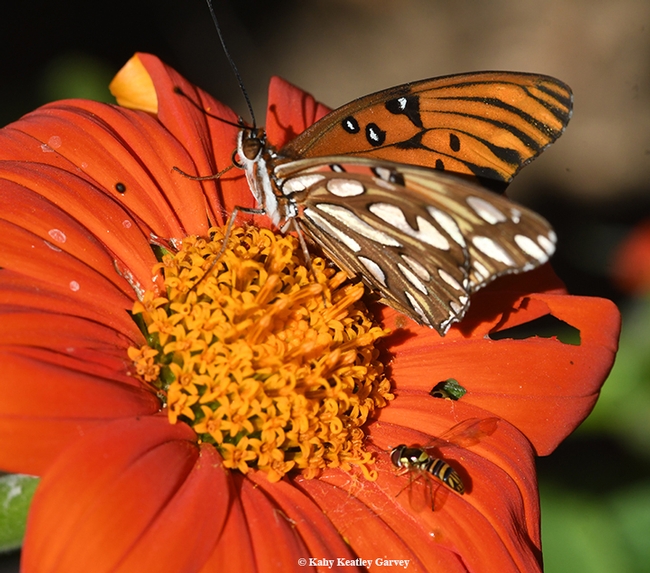
A Gulf Fritillary shares a Mexican sunflower (Tithonia) with a hover fly (Syrphid). (Photo by Kathy Keatley Garvey)
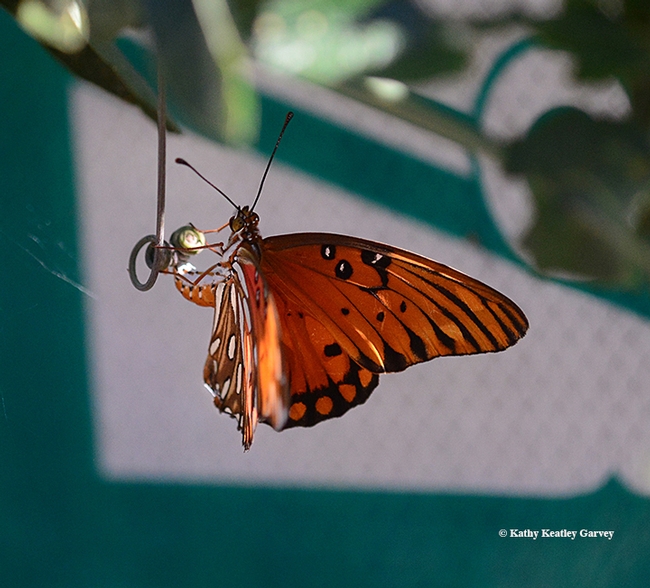
A Gulf Fritillary laying an egg on the tendril of a passionflower vine (Passiflora). (Photo by Kathy Keatley Garvey)
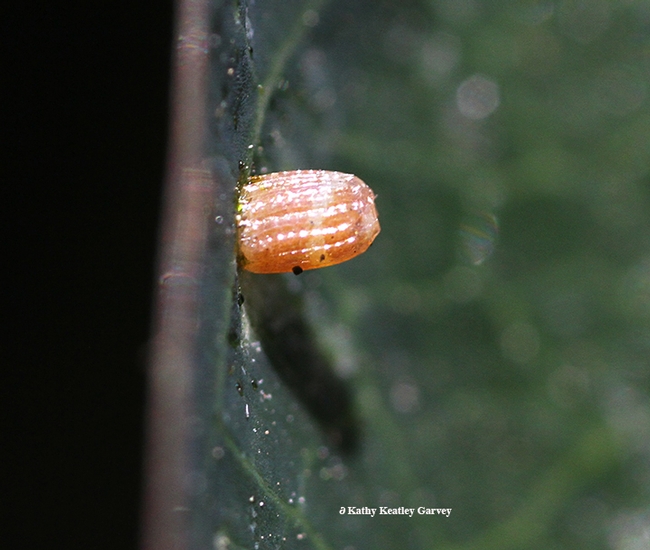
Close-up shot of a Gulf Fritillary egg. (Photo by Kathy Keatley Garvey)
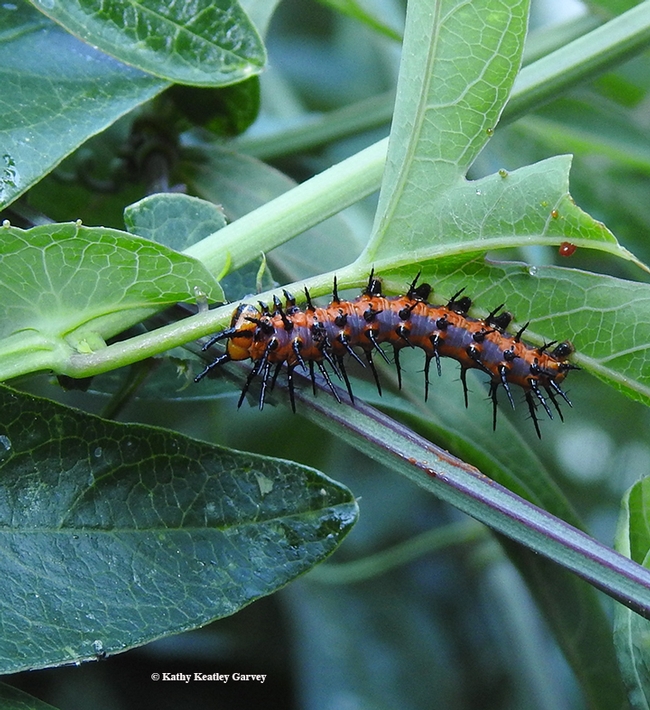
A very hungry Gulf Fritillary caterpillar. (Photo by Kathy Keatley Garvey)
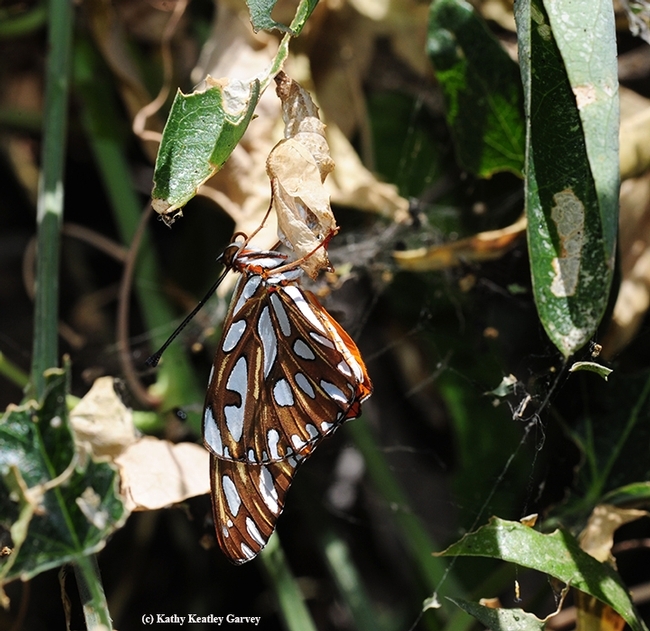
A newly eclosed Gulf Fritillary and its chrysalis. (Photo by Kathy Keatley Garvey)
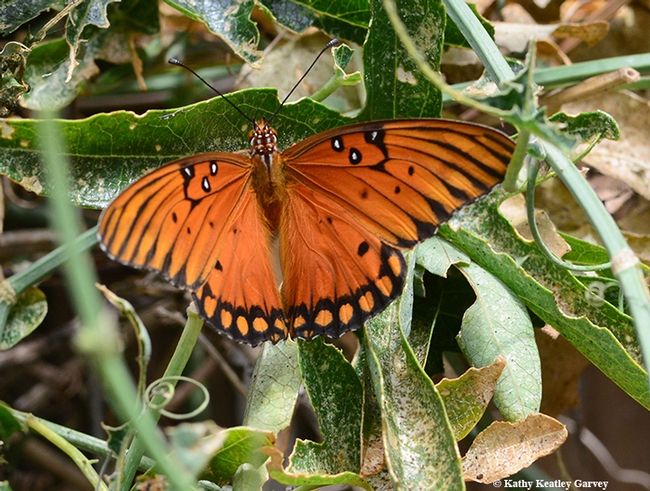
A Gulf Fritillary spreads its wings on Passiflora. (Photo by Kathy Keatley Garvey)